Spineless rent seeking psychopaths.
http://www.nytimes.com/2014/02/14/us/salaried-doctors-may-not-lead-to-cheaper-health-care.html?_r=0
Apprehensive, Many Doctors Shift to Jobs With Salaries

Last year, 64 percent of job offers filled through Merritt Hawkins, one of the nation’s leading physician placement firms, involved hospital employment, compared with only 11 percent in 2004. The firm anticipates a rise to 75 percent in the next two years.
Today, about 60 percent of family doctors and pediatricians, 50 percent of surgeons and 25 percent of surgical subspecialists — such as ophthalmologists and ear, nose and throat surgeons — are employees rather than independent, according to the American Medical Association. “We’re seeing it changing fast,” said Mark E. Smith, president of Merritt Hawkins.
Health economists are nearly unanimous that the United States should move away from fee-for-service payments to doctors, the traditional system where private physicians are paid for each procedure and test, because it drives up the nation’s $2.7 trillion health care bill by rewarding overuse. But experts caution that the change from private practice to salaried jobs may not yield better or cheaper care for patients.
“In many places, the trend will almost certainly lead to more expensive care in the short run,” said Robert Mechanic, an economist who studies health care at Brandeis University’s Heller School for Social Policy and Management.
When hospitals gather the right mix of salaried front-line doctors and specialists under one roof, it can yield cost-efficient and coordinated patient care. The Kaiser system in California and Intermountain Healthcare in Utah are considered models for how this can work.
But many of the new salaried arrangements have evolved from hospitals looking for new revenues, and could have the opposite effect. For example, when doctors’ practices are bought by a hospital, a colonoscopy or stress test performed in the office can suddenly cost far more because a hospital “facility fee” is tacked on. Likewise, Mr. Smith said, many doctors on salary are offered bonuses tied to how much billing they generate, which could encourage physicians to order more X-rays and tests.
Mr. Mechanic studied 21 health systems considered good models of care — including the Mayo Clinic and the Palo Alto Medical Foundation — and discovered that many still effectively rewarded doctors for each procedure. “It doesn’t make any sense,” he said.
Hospitals have been offering physicians attractive employment deals, with incomes often greater than in private practice, since they need to form networks to take advantage of incentives under the new Affordable Care Act. Hospitals also know that doctors they employ can better direct patients to hospital-owned labs and services.
“From the hospital end there’s a big feeding frenzy, a lot of bidding going on to bring in doctors,” Mr. Mechanic said. “And physicians are going in so they don’t have to worry — there’s a lot of uncertainty about how health reform is going to play out.”
In addition, Medicare had reduced its set doctors’ fees over the last decade, while insurers have become more aggressive in demanding lower rates from individual practices that have little clout to resist. Dr. Robert Morrow, a family doctor in the Bronx, said he now received $82 from Medicare for an office visit but only about $45 from commercial insurers.
Dr. Cathleen London practiced family medicine for 13 years outside Boston, but recently took a salaried job at a Manhattan hospital. She said she accepted a pay cut because she could see that she was losing ground in her practice. “I think the days of what I did in 1999 are over,” she said. “I don’t think that’s possible anymore.”
The base salaries of physicians who become employees are still related to the income they can generate, ranging from under $200,000 for primary care doctors to $575,000 in cardiology to $663,000 in neurosurgery, according to Becker’s Hospital Review, a trade publication.
Because of the relatively low salaries for primary care doctors, Dr. Suzanne Salamon said that for the last two years she has had trouble filling a prestigious Harvard geriatrics fellowship she runs.
Dr. Howard B. Beckman, a geriatrician at the University of Rochester, who studies physician payment incentives, said reimbursements for primary care doctors must be improved to attract more people into the field. “To get the kinds of doctors we want, the system for determining salaries has to flip faster,” he said.
Dr. Joel Jacowitz, a cardiologist in New Jersey, and his 20 or so partners decided to sell their private practice to a hospital. In addition to receiving salaries, that meant they no longer had to worry about paying malpractice premiums themselves or finding health insurance for their staff members.
Dr. Jacowitz said that the economics drove the choice and that the only other option would have been to bring in more revenue by practicing bad medicine — ordering more heart tests on patients who did not need them or charging exorbitant rates to people with private insurance. He said he knew of one cardiologist in private practice who charges more than $100,000 for a procedure for which Medicare pays about $750.
“Some people are operators and give the rest of us a bad name,” he said, adding that he had changed his opinion about America’s fee-for-service health care system. “I’m fed up — I want a single-payer system.”
Dr. Kirk Moon, a radiologist in private practice in San Francisco, also sees advantages for the nation when doctors become employees. “I think it’s pretty clear that sooner or later we’re all going to be on salary,” he said. “I think there’ll be a radical decrease in imaging, but that’s O.K. because there’s incredible waste in the current system.”
Various efforts to change incentives for doctors and hospitals are being tested. An increasing number of employers or insurers, for example, pay health systems a yearly all-inclusive payment for each patient, regardless of their medical needs or how many tests are dispensed. If doctors order unnecessary tests, it costs the hospital money, rather than bringing it in.
And instead of offering bonuses for productivity — doctors cite pressures from hospital employers to order physical therapy for every discharged patient or follow-up M.R.I. scans on every patient who got an X-ray — some hospital systems are beginning to change their criteria. They are providing bonuses that reward doctors for delivering high quality and cost effective care, such as high marks from patients or low numbers of patients with asthma who are admitted to the hospital.
“The question now is how to shift the compensation from a focus on volume to a focus on quality,” said Mr. Smith of Merritt Hawkins. He said that 35 percent of the jobs he recruits for currently have such incentives, “but it’s pennies, not enough to really influence behavior.”


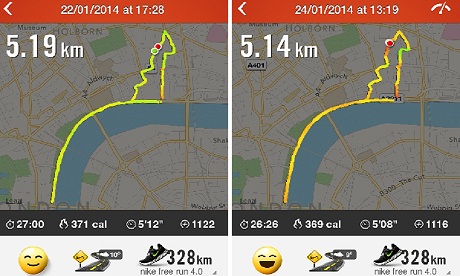 Smartphone app visualises two similar running routesI am obsessed with my running app. Last week obsession became frustration verging on throw-the-phone-on-the-floor anger. Wednesday’s lunchtime 5km run was pretty good, almost back up to pre-Christmas pace. On Friday, I thought I had smashed it. The first 2km were very close to my perennial 5 min/km barrier. And I was pretty sure I had kept up the pace. But the app disagreed.As I ate my 347 calorie salad – simultaneously musing on how French dressing could make up 144 of them – I switched furiously between the two running route analyses. This was just preposterous; the GPS signal must have been confused; I must have been held up overtaking that tourist group for longer than I realised; or perhaps the app is just useless and all previous improvements in pace were bogus.My desire to count stuff is easy to poke fun at. It’s probably pretty unhealthy too. But it’s only going to be encouraged over the next few years. Wearable technology is here to stay. Smart phone cameras
Smartphone app visualises two similar running routesI am obsessed with my running app. Last week obsession became frustration verging on throw-the-phone-on-the-floor anger. Wednesday’s lunchtime 5km run was pretty good, almost back up to pre-Christmas pace. On Friday, I thought I had smashed it. The first 2km were very close to my perennial 5 min/km barrier. And I was pretty sure I had kept up the pace. But the app disagreed.As I ate my 347 calorie salad – simultaneously musing on how French dressing could make up 144 of them – I switched furiously between the two running route analyses. This was just preposterous; the GPS signal must have been confused; I must have been held up overtaking that tourist group for longer than I realised; or perhaps the app is just useless and all previous improvements in pace were bogus.My desire to count stuff is easy to poke fun at. It’s probably pretty unhealthy too. But it’s only going to be encouraged over the next few years. Wearable technology is here to stay. Smart phone cameras 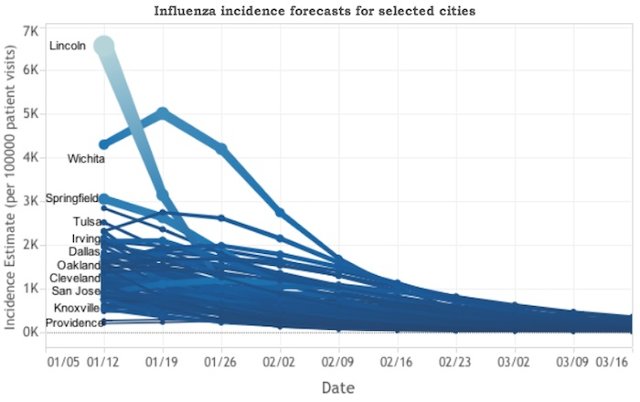
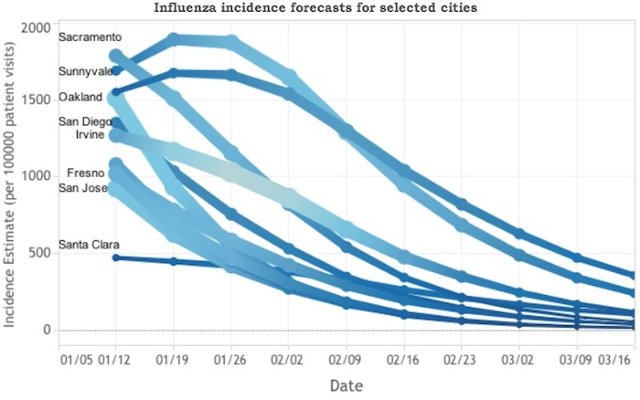
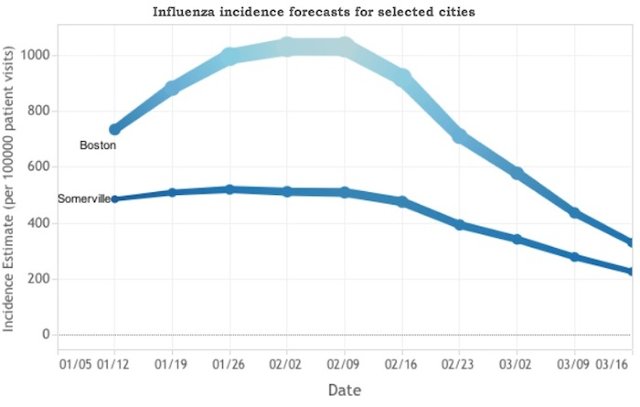
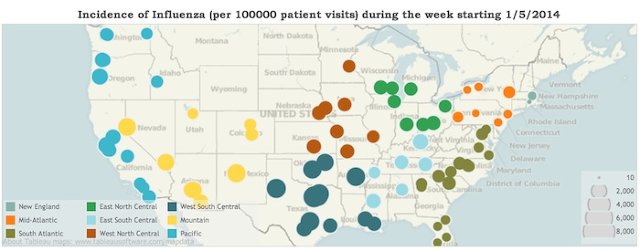




David L. Katz, MD, MPH
January 21, 2014